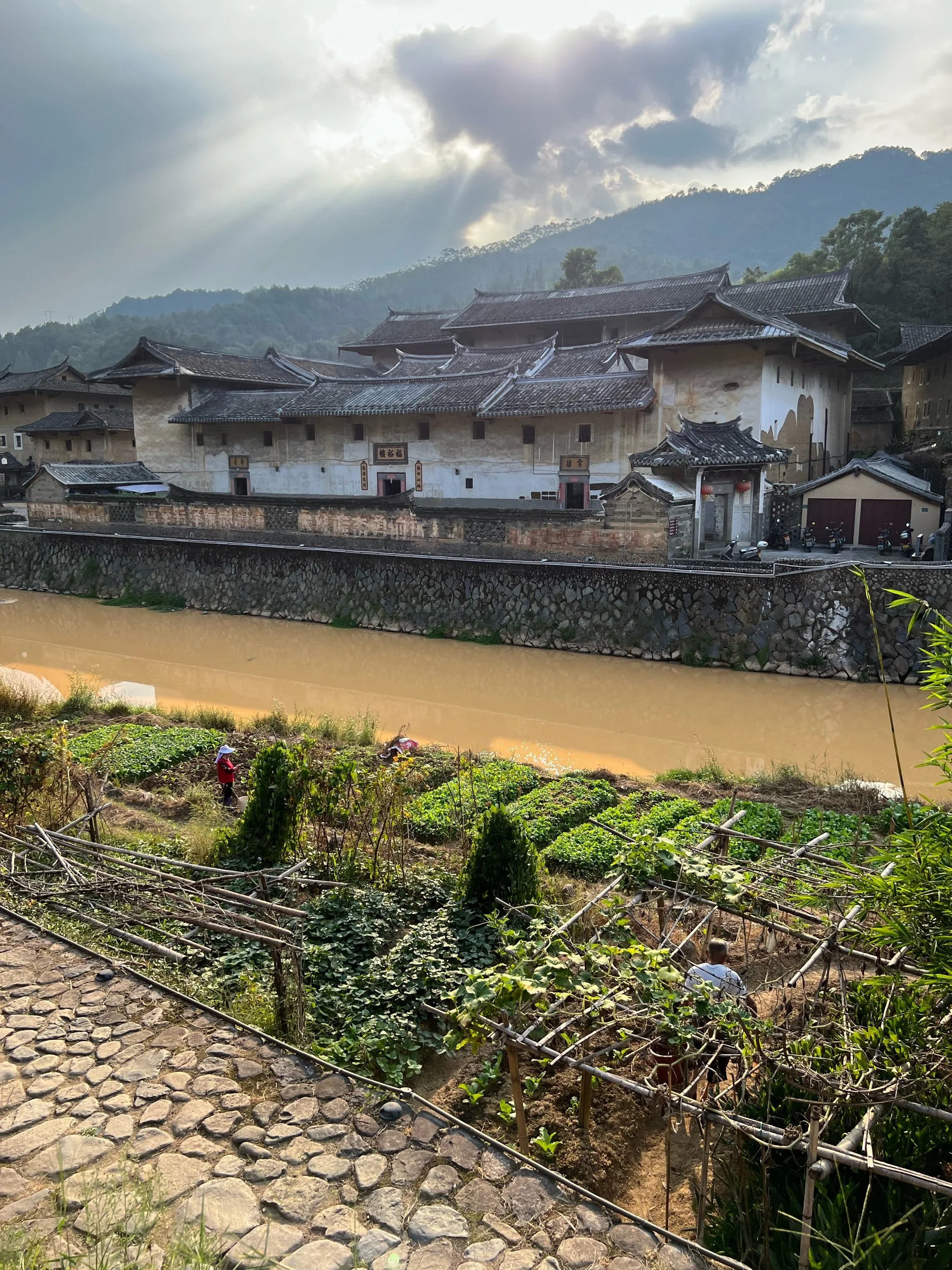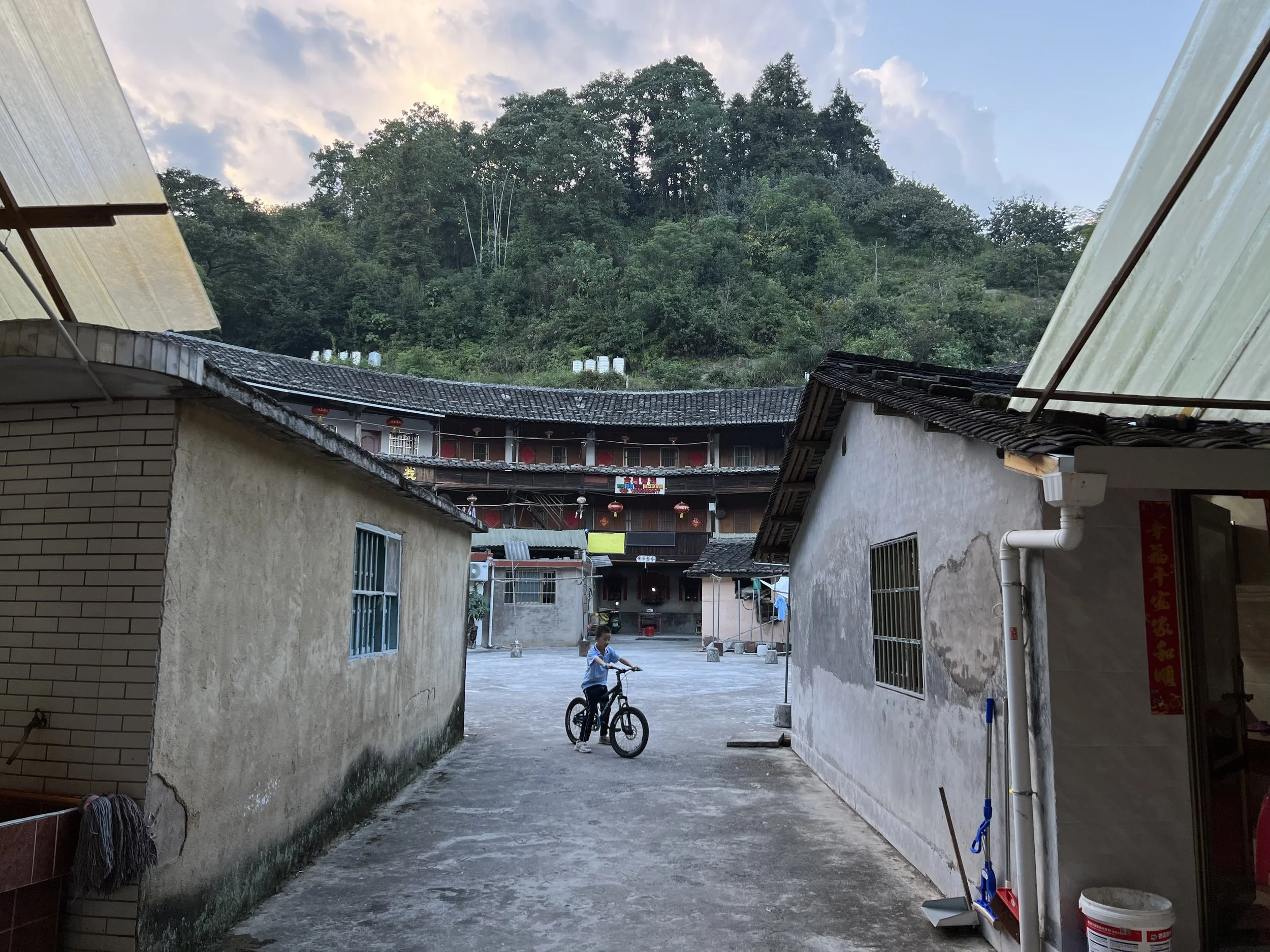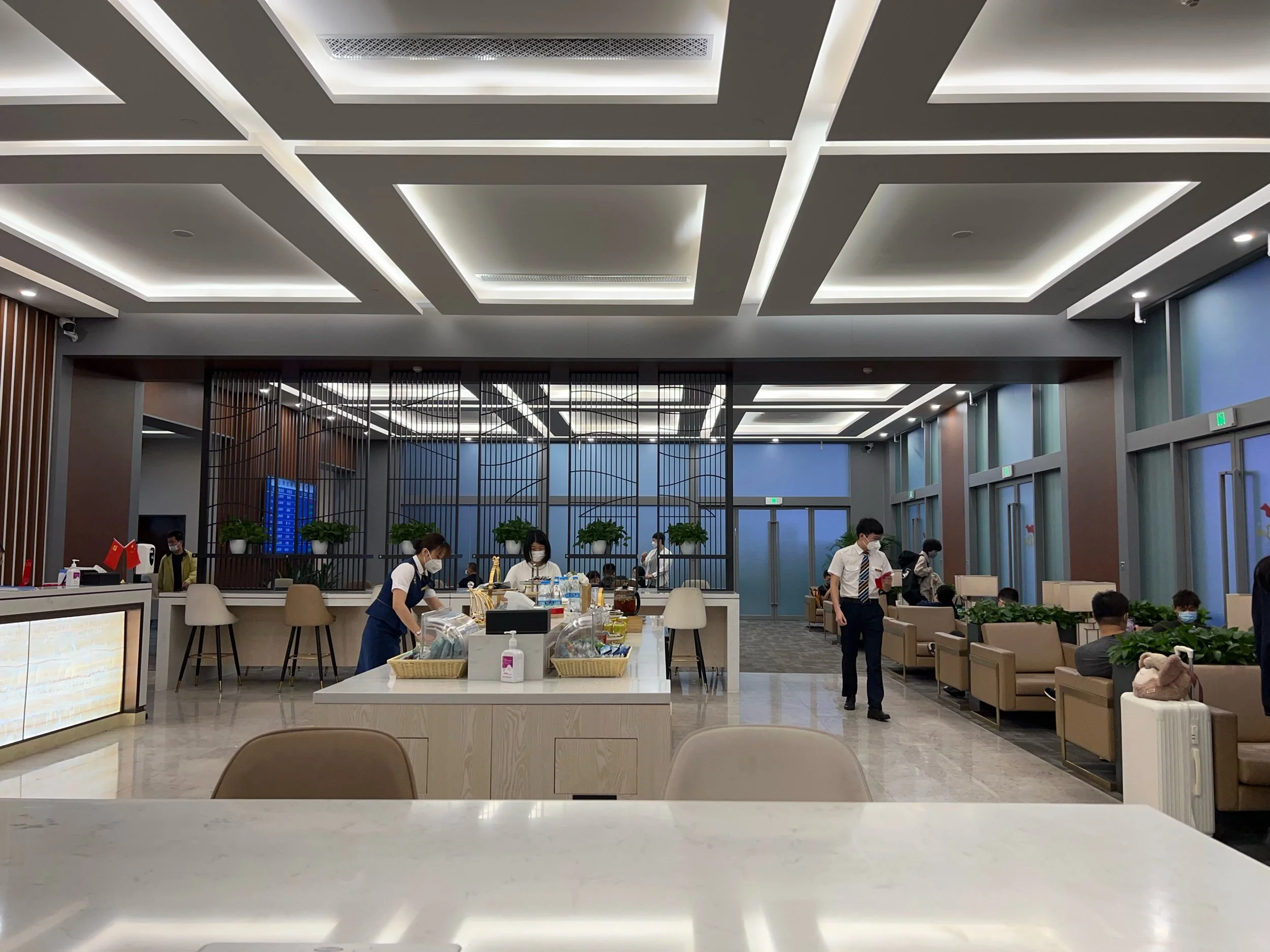Tulou Day 1 afternoon: Exploring my homebase, the Hongkeng 洪坑 tulou cluster
I had a kind of white-knuckled ride from the train station to the tulou inn - the driver seemed quite drowsy on the highway? But he finally came into his own in the windy roads close the Hongkeng (洪坑) tulou cluster. We parked and arrived at Fuyu building (富裕楼), where the Changdi Inn is (常棣客栈) is.
It’s right on the bank of this river, along whose banks the villagers have some crops. Very picturesque!
I read that this tulou is in the “five phoenix” style, low in the front, higher in the back, and wings on either side - and “five elements of modern Chinese philosophy.” (I’ll have to check up what these are.
Actually the first building that I noticed, coming in the car, was the Rusheng building (如升楼). It’s known as the mini tulou, because it really is mini!
Cute on the outside, it was kind of eerie on the inside. I didn’t see anyone inside, but I did hear a scampering noise….
…and a most pitiful wailing, coming from inside this chest.
Inside it was filled with guinea pigs! I think when they sensed I was near, they started to cause a commotion, looking up through the narrow crack on the left side of the box.
When I came back around at night, I saw these black dried things in front of their name plaque. I had a fright, thinking that these were bats, but I think they were actually dried plantain peels. In any case, I got the feeling of “cute, but eerie” with this tulou…
Walking along the banks of the river, I ended up at the Zhencheng building (振成楼), also known as “Prince of Tulou.”
It‘s a big four-story donut, encircling a smaller donut!
This one felt more commercial, with lots of shops on the ground floor, and random aunties trying to get you to go upstairs - for a fee. I did want to go upstairs, but the auntie said it was 20 RMB. I said, but I heard it was only 10 (that’s what my innkeeper told me), and she quickly acquiesced. I then scanned her WeChat QR code to pay her the money…
Across the river was this big square tulou, Jingyang building (景阳楼). This doesn’t actually appear on any map or list, I guess because it’s not on the World Heritage list.
But this was one of my favorites of this village, because I could really get a sense of real people living here.
It was like a little village-within-a-village on the ground level, with detached buildings in the courtyard.
People here were going about their daily lives, cooking, etc.
The river, by the way, had a gaggle of geese…
Along the river, I next came upon Chaoyang building (朝阳楼). This was on the map given to me by the innkeeper, because it is a relatively new tulou, being built in the 60s if I heard correctly.
Inside, it also looks similar, but the concrete and brick-sided buildings in the middle, and the concrete floor, give a different feel.
Finally, I went to Kuiju building (奎聚楼), another rectangular tulou.
It sits higher up than the others, and has a view of some fields.
Then it was back to my tulou inn. It has a nice atmosphere!
For dinner, I ate in the courtyard. The guy taking the order recommended a chicken soup, “Herbal (milk root) chicken soup” (土鸡草药(牛奶根)汤) with half of a chicken. It had a very “clean” but subtle flavor. I ate all of the chicken, and drank all of the soup, even though it was a huge earthen pot. Good hydration!
He also recommended the sweet potato leaves, which he said they grew themselves. It was nicely stir-fried with garlic.
They also gave me a taste of their glutinous rice wine 米酒 on the house. It wasn’t very strong, and quite sweet - works as a dessert!
At 7:30, the village has a “light show” (with some of the areas lit up with color-changing LEDs.
I almost wish they just had a nice, warm glow; some of the greens, blues, and purples seemed rather unnatural for the setting.
They also had this projection show, where some animation and music about Hakka history was projected onto a continuous spray of water in the river. I’d only seen such projection mapping before in videos, for my digital art class, but never in person!
All of the above, I did starting from around 4pm, after arriving at the train station at 12:40pm, doing the PCR test, driving to the village, settling into my room, and being invited by the innkeeper to try some tea, and to listen to the story of the tulou where he grew up himself.
It felt like a whole day’s worth of touring, in just a late afternoon and evening!






